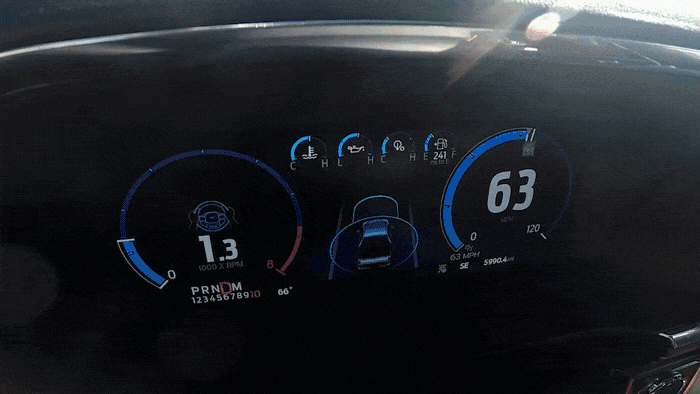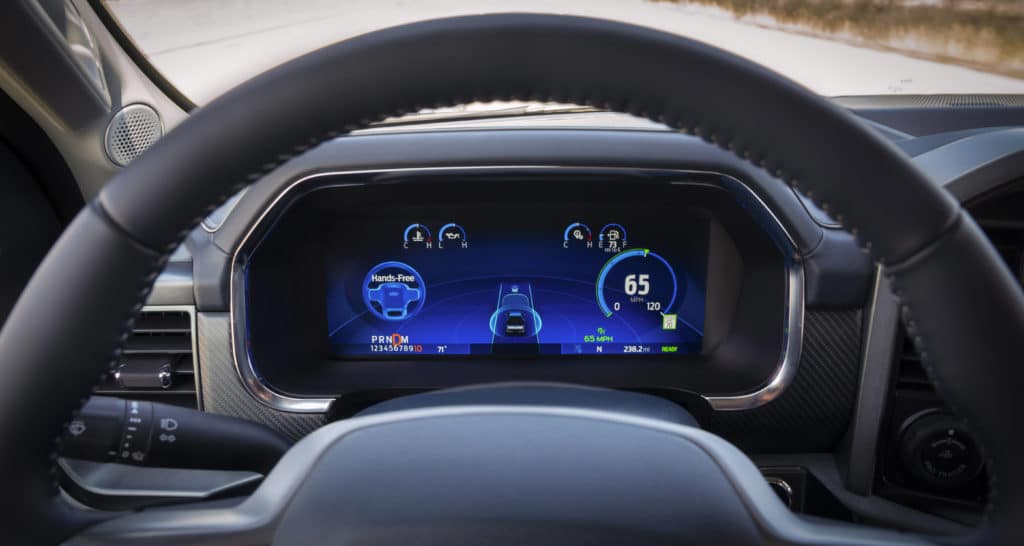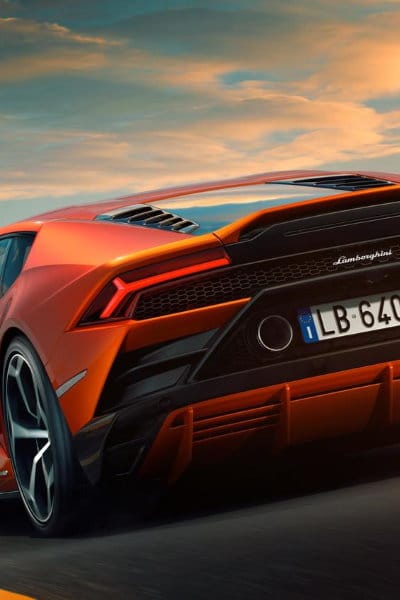Ford will begin offering its new BlueCruise hands-free highway driving system later in 2021. Via over-the-air software updates, the feature will be available for 2021 F-150 and 2021 Mustang Mach-E models equipped with the optional Ford Co-Pilot360 Active 2.0 Prep Package. Ford is anticipating the sale of more than 100,000 vehicles equipped with BlueCruise in the first year, based on sales and take-rate projections.
Testing & Validation
In 2020, Ford sent a fleet of 10 test vehicles – five F-150 pickups and five all-electric Mustang Mach-E SUVs – to complete what test drivers dubbed the “Mother of All Road Trips.” The trek covered more than 110,000 miles through 37 states and five Canadian provinces to challenge BlueCruise against a wide range of road, weather, and traffic conditions.
“There are highway intricacies and driving conditions that you simply cannot replicate in a lab,” explained Hau Thai-Tang, Ford chief product platform and operations officer. “Sending these vehicles out for real-world driving experiences is just one of many ways we ensured that BlueCruise technology offers confidence and convenience for drivers all across the continent.”
The test vehicles spent much of last November and December traveling across the United States and Canada, searching for every possible road condition and scenario. With each passing mile, test engineers logged data and monitored the system’s performance to highlight any areas of improvement. This late 2020 trip was the final stretch of a development process that spanned a half-million miles, broken down into smaller tests, each configured to evaluate and validate a specific aspect of BlueCruise.
“I drive long-distance quite often, whether out to Boston or down to Florida to visit family or friends, and usually I mentally tire out on drives that far,” said Alexandra Taylor, BlueCruise feature development engineer, who logged more than 3,000 miles in an F-150 on the journey. “The one thing that became clear is that, when using BlueCruise, long drives aren’t nearly as mentally taxing to me.”

Mission Control
Taylor and fellow engineer Shruti Gotadki set out on an eight-day journey covering the southeast United States, targeting driving differences between Jacksonville, Louisville, Atlanta, and other major urban areas. Meanwhile, back at the Ford lab, driver-assist technology supervisor Justin Teems monitored the entire fleet’s progress, corralling essential data that will help shape the BlueCruise driving experience in the months and years ahead.
“It was like mission control,” Teems recalled. “We really wanted to push BlueCruise to its limits. Every state builds roads a little differently. When you include factors like lane line degradation, weather and construction, building a hands-free driving system becomes extremely complex. Those complexities are why Ford has the best team of engineers in the world working on it.”

How BlueCruise Works
Using camera and radar-sensing technologies and building upon Intelligent Adaptive Cruise Control with Stop-and-Go, Lane Centering and Speed Sign Recognition, BlueCruise is designed to add another layer of convenience for drivers. According to Ford, the feature allows a driver to operate truly hands-free on prequalified sections of divided highways called “Hands-Free Blue Zones.” Ford’s Lane Centering feature and a driver-facing camera in the instrument cluster (monitors eye gaze and head position) help ensure the system’s overall safety.
As of this writing, more than 100,000 miles of highways across North America have dedicated Hands-Free Blue Zones in the Ford GPS mapping system. BlueCruise uses blue lighting (naturally!) on the digital instrument cluster to indicate when a driver is entering a hands-free zone.
BlueCruise vs. Super Cruise
As described by Ford, BlueCruise is an SAE Level 2 driver-assist technology that, while in Hands-Free Mode, does not require a driver’s hands to stay in contact with the steering wheel unless prompted by vehicle alerts.
“Unlike other approaches – such as GM’s Super Cruise, which uses red and green lighting, or Tesla’s Autopilot, which requires a driver keep their hands on the steering wheel – BlueCruise communicates with drivers in different ways,” Ford said in a statement. “The instrument cluster transitions to communicate that the feature is in Hands-Free mode through text and blue lighting cues, effective even for those with color blindness.”
Pricing & Availability
Beyond the 2021 F-150 and 2021 Mustang Mach-E, additional vehicles will also receive BlueCruise, while current owners will receive over-the-air software updates to add new features and capabilities. Future updates include systems like Lane Change Assist (allows the vehicle to change lanes by tapping the turn signal) and Predictive Speed Assist (adjusts speed for curves, roundabouts, and more). Regular mapping updates are also in the works.
2021 F-150 and Mustang Mach-E customers will be able to purchase BlueCruise software – including a three-year service period – for $600 in the second half of 2021. Hardware pricing varies by vehicle.
For F-150, BlueCruise is available as a part of the Ford Co-Pilot 360 Active 2.0 package for a total of $1,595: $600 for the software and $995 for the hardware. The Ford Co-Pilot 360 Active 2.0 package is standard on F-150 Limited and available as an option on Lariat, King Ranch, and Platinum.
For Mustang Mach-E, BlueCruise comes standard on CA Route 1, Premium, and First Edition variants. It’s an available package on the Select trim for $3,200: $600 for the software and $2,600 for the rest of the package – as part of the larger Comfort and Technology package, which includes a 360-degree camera, heated front seats, and a heated steering wheel.
*This article originally appeared on AutoVision News. It has been republished with permission.





